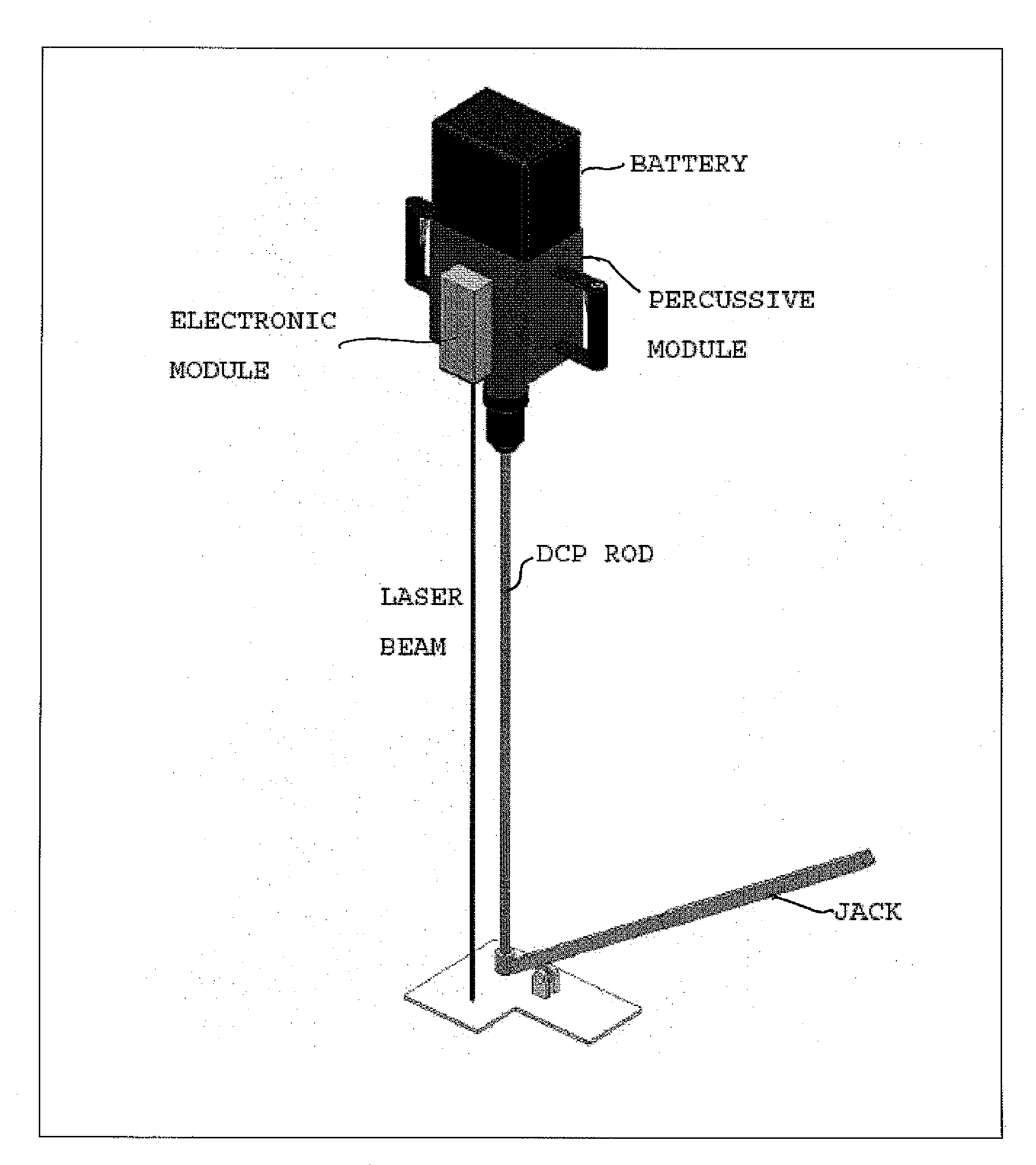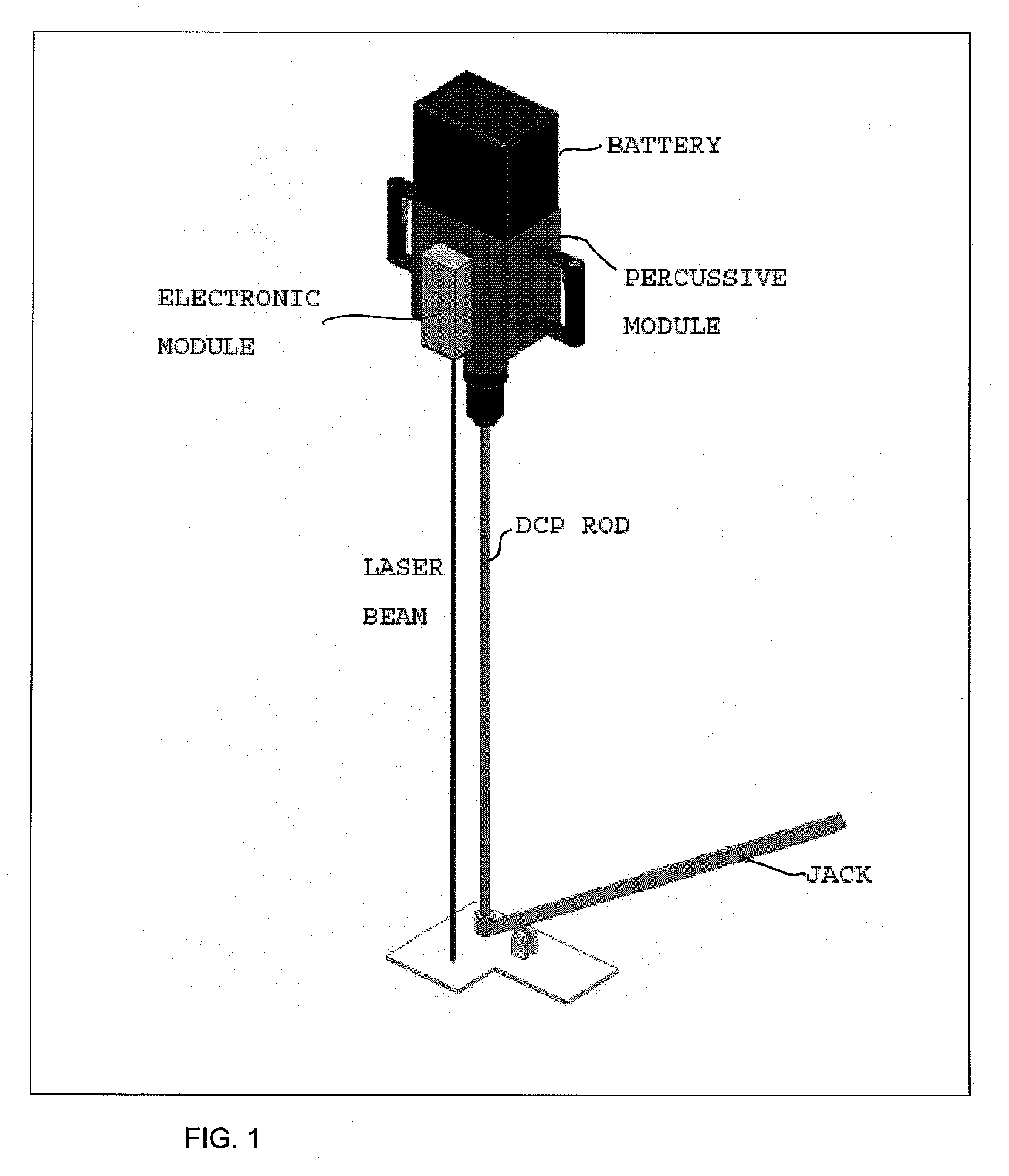Penetrometer with electronically-controlled hammering module
a penetrometer and electronic control technology, applied in the field of improved penetrometer devices, can solve the problems of heavy equipment, many disadvantages of the prior art, fatigue of the human operator, etc., and achieve the effect of increasing the hammering rate and increasing the impa
- Summary
- Abstract
- Description
- Claims
- Application Information
AI Technical Summary
Benefits of technology
Problems solved by technology
Method used
Image
Examples
Embodiment Construction
[0011]FIG. 1 shows a schematic perspective view of a penetrometer with an electronically-controlled hammering module in accordance with the present invention. The hammering module applies a controlled hammering force to the top of a driven end of a long, rigid rod having an opposite ground piercing end, referenced in the figure as a dynamic cone penetrometer (DCP) rod, to drive its ground-piercing end into the ground. In a preferred embodiment adapted for field use, the hammering module includes an electronic (control) module, a battery as a power source, and a percussive module for applying a controlled and repetitive percussive hammering force to the top of the rod. A jack is used to facilitate removal of the rod from the ground.
[0012]The application of the hammering force causes the cone-shaped point of the DCP rod to penetrate into the soil at a controlled rate that is correlated with the strength of the soil. The depth of penetration is determined by noting the decrease in dist...
PUM
| Property | Measurement | Unit |
|---|---|---|
| hammering force | aaaaa | aaaaa |
| height | aaaaa | aaaaa |
| strength | aaaaa | aaaaa |
Abstract
Description
Claims
Application Information
 Login to View More
Login to View More - R&D
- Intellectual Property
- Life Sciences
- Materials
- Tech Scout
- Unparalleled Data Quality
- Higher Quality Content
- 60% Fewer Hallucinations
Browse by: Latest US Patents, China's latest patents, Technical Efficacy Thesaurus, Application Domain, Technology Topic, Popular Technical Reports.
© 2025 PatSnap. All rights reserved.Legal|Privacy policy|Modern Slavery Act Transparency Statement|Sitemap|About US| Contact US: help@patsnap.com


